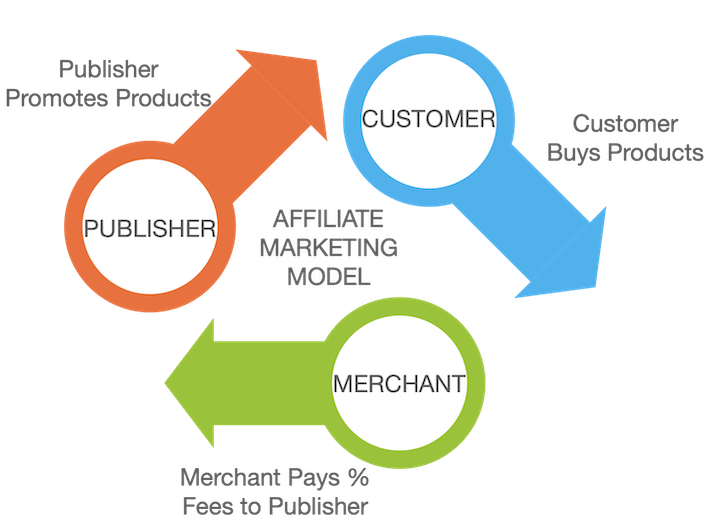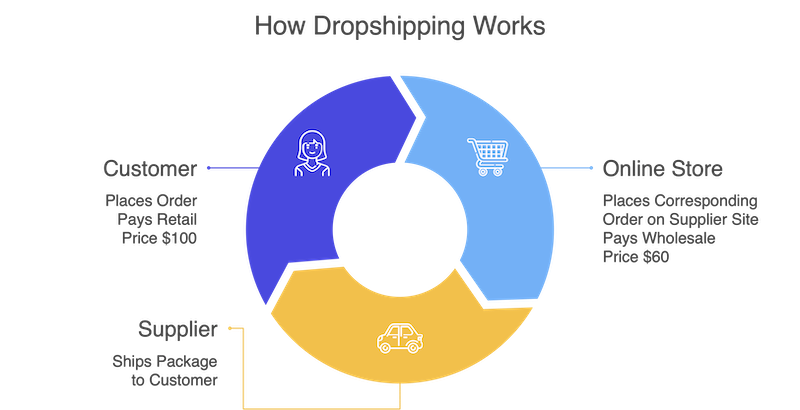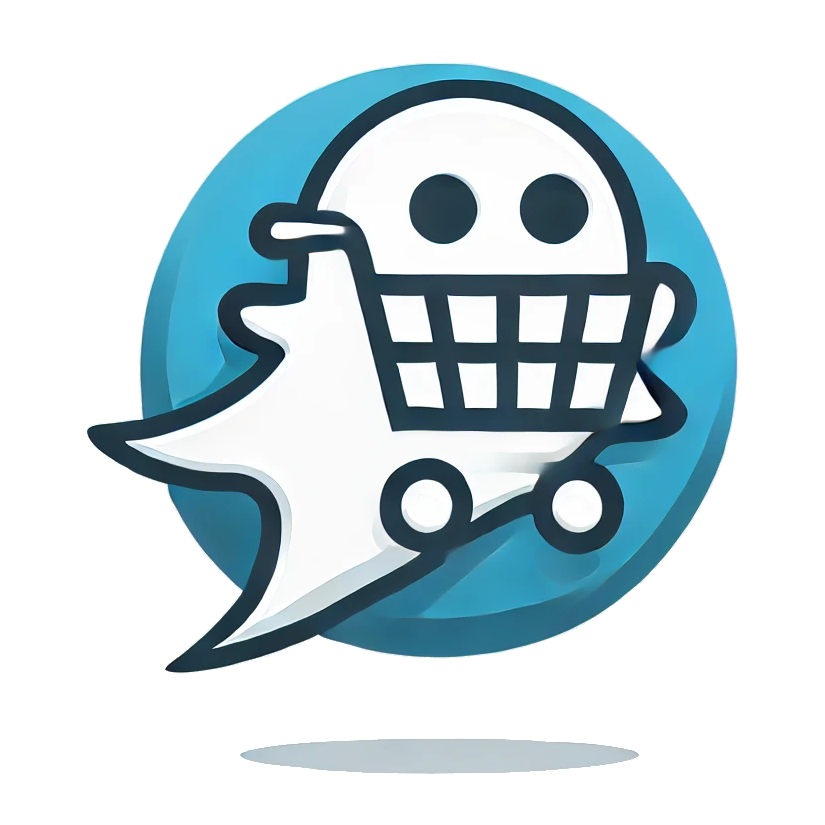How To Start A Successful Online Store In 5 Easy Steps

Why should you create your own online store?
For many people, their day job leaves them exhausted, demotivated, frustrated and unfulfilled. You may have thought about starting an online business many times, but believed it to be too complicated and time consuming. There are many examples of people starting an online business, making 6 or even 7 figure incomes, and able to quit their day jobs to run their online business. Best of all, you set your own hours, and make sales even when you’re not working.
The truth is that these days the technology has come a long way to support creating your online store with very little technical skills. Ten years ago it would have taken a team of people to start an online business. In this article, we’ll show you how to create your online store in 10 easy steps.
Step 1: Choose the Right e-Commerce Business Model
Why not just sell on Amazon or eBay? Sure these are great options to get you started, but the main reasons not to sell there are:
-
Establish your own brand - When selling on Amazon or eBay, customers are never really aware of the business they’re buying from. Your brand gets lost in the sea of other business selling the same products.
-
Business sustainability - Amazon or eBay can ban you at any time, change pricing or their ranking algorithm. This can dramatically affect your ability to survive as a business and put your future at risk.
-
Engage with your customers - The majority of successful businesses have repeat customers. Amazon does not let you contact your customers and hides their names and mailings addresses.
When you run your own online store, you have many advantages over Amazon. Just a few of them are:
- Customer data - you can build a list of your customers, reach out to them and generate years of recurring business
- Establish your own brand - People will get to know your business and you can learn from your audience to improve your ability to succeed in the future. This allows you to stand out from your competitors and compete on a level playing field.
- Protect your business - By running your own site, you won’t be subject to someone else’s decisions about how can see or buy your products.
- More opportunities to sell - You’ll have the flexibility to sell where you want to sell. Online, Facebook, or in your own physical store.
- Ad campaigns - you can run third party ads on social networks, or other sites to drive more traffic to your site.
Four e-Commerce Business Models
- Affiliate store
- Drop shipping store
- Traditional online store
- Private label online store
Affiliate Store:

An affiliate store is one in which you get a small percentage from every sale that you drive to a third party shopping site. You can eventually convert an affiliate store into a real e-commerce store.
Advantages:
- You don’t need to stock any inventory
- Hosting costs are very low from as little as $3 per month
- Startup costs are also very low
- Sales scale linearly with traffic
- Convert to a real online store anytime
Disadvantages:
- Payments are delayed - typically 30 to 90 days
- Payout percentage is low - 1%-4%
- Need to create great content
- Poor user experience - as shoppers are driven away from your site
- No repeat business - you don’t know anything about your customers and can’t reach out to them to build a relationship with them.
An affiliate store might be right for you if you enjoy writing content, and are on an extremely tight budget. If you do decide to run an affiliate store, and find that a few of the products are doing well, you can start a real online store with just the best performing ones.
Drop Shipping Store

A drop shipping store is one where you don’t have to deal with any inventory of your own. So you don’t need to worry about a warehouse to store your products, or shipping your products to your end customers. The responsibility for warehousing and shipping is completely on the shoulders of the dropshipping company. The way it works is that a customer places an order on your online store, and then you place a corresponding order on the dropshippers site. The second part of that can happen either manually by you placing the order, or automatically if there’s an option for that. When the shipment will either be packaged plainly, or sometimes you can place your companies branding on the shipment packaging.
Advantages:
- No need to store or manage your product inventory
- No need to ship your products
- Lower startup costs than managing your own inventory
- Scales very well
Disadvantages:
- Margins are lower than managing your own inventory - Typically 10-30%
- Generally longer shipping times and fewer packaging options
- Return processing can be messy
- You’re at the mercy of your dropshipping supplier
- Comparison shopping for common products can reduce your profits
- More startup cost than an affiliate site
A dropshipping store might be right for you if you don’t want the hassles of dealing with inventory or shipping your products. You may also want to test whether certain products sell well via the dropshipping model first, and then if they are successful, then you can store your more popular products to increase your profit margins. Generally this is a low cost way to get started with your first online store.
Traditional Online Store:

In a traditional online store, you store all of the inventory for your products either at home or in a local warehouse. The responsibility for warehousing and shipping is completely under your control. The way it works is that a customer places an order on your online store, and then you package and ship your products directly to your customers. In this model, you have control over the majority of factors affecting your businesses success.
Advantages:
- More control - Your not at the mercy of your dropshipping supplier
- The profit margins are generally higher than for the dropshipping model - Typically 25% - 50%
Disadvantages:
- You need to store inventory, and an deal with any unsold inventory
- Doesn’t scale very well - If you get a large surge in sales, you may run out of product, or have difficulty keeping up with all of the shipping demands.
- Comparison shopping for common products can reduce your profits
- More startup costs than a dropshipping site
If you’re OK with some higher initial startup costs, you can get to profitability sooner in this model than with the dropshipping model. If you do your research on which products to stock, you can reduce some of the risks of carrying your own inventory. The nice thing about this model is that you can also mix this model with the dropshipping model to get familiar with which products are performing better with your customers before adding some additional risk.
Private Label Online Store:

In a private label online store, you’re designing and manufacturing a custom and unique product. You may also be outsourcing the manufacturing to a third party, where they manufacture and/or label and package the product to your exact specifications. Similar to a traditional online store, you need to house all of the inventory for your products either at home or in a warehouse. The responsibility for warehousing, packaging and shipping is completely under your control. The way it works is that a customer places an order on your online store, and then you package and ship your products directly to your customers. If it’s a very customized product, then you may also need to manufacture it, before you can ship it. For example in a custom t-shirt or embroidery business. In this model, you have control over the product manufacturing as well as the majority of factors affecting your businesses success. You’re not at the risk from the manufacturer's ability to supply you the end products.
Advantages:
- Full control of manufacturing and distribution
- Highest profit margin of all models - Typically 50% - 100%
- No losses due to comparison shopping
Disadvantages:
- Highest startup costs of all the models
- Product design isn’t a simple process
If you're a very creative person, and you’re already designing or manufacturing products for family, friends, or other retailers right now and just want to increase your product sales, then this model may be for you. This model would generate the most profits for you, however, if you’re not ready to get into product design or manufacturing, then it probably isn't the right choice. Also, although you technically could mix your private label products with other manufacturer’s products, generally this will dilute your brand and isn’t recommended in most cases.
Choose Your eCommerce Model
The simplest and lowest risk option is to go with an Amazon affiliate store. The problem with choosing that model is that it’s also the lowest profitable model and it will take you a long time to become profitable. The likelihood of being able to quit your day job, and focusing on just your online store would be very low. If you’re a very creative person, then a private label store is probably the right choice. For most people the right choice is either a dropshipping or a traditional online store. This gives you the greatest chance of eventually quitting your day job, and living off of the revenue from your online store. If you’ve chosen one of these two options, then the next step is finding products to sell.
Step 2: Pick a Product Category
The very first step before you even try and pick products to sell is to first pick a product category that you have a genuine interest in. Why is this important? Because if you’re not interested in what you’re selling, then it’s difficult to maintain motivation and passion over a long period of time. For example if you like electronics, or automotive products, or clothing, then any of them would make a great choice. You should always be able to find niche products in any of those categories that can be successful. This will also help you pick a theme for your store later on in the process.
Step 3: Finding Products to Sell
Now that you have your store category, it’s time to find a product. So how do you find a product that will be profitable to sell in large numbers? One great way is to let Amazon point you in the right direction. Now that many people are doing more of their shopping from home, Amazon is responsible for more about 50% of all online sales. It’s hard to believe the scale that Amazon has now reached, and there doesn’t seem to be any end in sight to that. To gain some valuable insight to the product sales there you can use Amazon’s Best Seller Ranks (or BSRs). These rankings won’t tell you exactly how many products they sell, or how profitable they are, but they will indicate how popular they are. That’s valuable insight to get you started on the selection process.
Here’s an example of a security camera’s BSR from Amazon:

While using a product’s BSR ranking is a great indicator, searching for products this way can be very time consuming. As with any time consuming task, it always goes faster when you have a powerful tool to make the process go faster. Two popular choices are Jungle Scout and Helium 10. Jungle Scout is what we’ll describe here, and can help you do Amazon product research and save you hundreds of hours of work.

Jungle Scout was founded in 2014 by Greg Mercer. It is basically a product research tool based on Amazon data that helps you find successful products, estimate sales, research keywords, and spy on your competitors all from one easy to use place. Product research is the single most important factor for your business’s success, as the competition for shoppers dollars is increasing every day. If you choose a lousy product, you will fail no matter how much effort you put into marketing it. Using your gut feeling is really not a smart way to choose a product to sell these days. There’s a lot to cover to describe how to use Jungle Scout properly to do it justice here. Here’s an in-depth review of how to Use Jungle Scout Like a Boss.
Describe Your Product
Once you picked your product or products, you need to put together content that describes your product in a way that accurately can be found, and then motivates the buyer to complete the purchase. Every business needs to describe it’s unique value proposition and it’s product descriptions needs to address these main areas:
Your Product Description:
Who is the target buyer for your product? All of the text for your product should be written with the target buyer in mind. What age group, what income group, what gender and what interests do your target buyers have. Use language and phrases that your target audience would use as you would be speaking directly to them.
What problem are you trying to solve? For example a hand cream solves your dry hands problem. A robot vacuum solves the constant build up of dust and dirt in your home. If your product doesn’t solve a specific problem then describe the design and aesthetics of the product.
What specific benefits does your product offer? Once you’ve answered the question as to what problem your product solves, describe how this product has benefits that other products that solve the same problem don’t have. Your product solves this problem better than any of the other products that solve it do. Try to tell a story here, and remember who your target buyer is and talk directly to them. The goal is to elicit an emotion while telling the story as this will dramatically help with the conversion from viewer to buyer. Also consider how this buyer would describe your product to another buyer with similar interests. Remember that we want to generate as many referral purchases as well since we won’t have to pay for any advertising to sell those products.
What do customers look for when buying your product? - Consider what attributes would compel you to buy this specific product. Once you’ve covered the problem you product solves, and benefits it provides, it’s time to get more specific on what customers look for. For the vacuum example is it suction power, or charge time, or running time, or dirt bin storage capacity, that your target audience would be more interested in?
Step 4: Your Company and Domain Name
Your Business Description:
Why should someone buy from your business? Finally, once you have a great product title and description, you need to answer this question. Analyse your competitors and describe what differentiates your business from the rest. Does your business have great brand reputation? This may take some time to build. What’s your return policy for your product? You want to remove as many barriers to purchase as you possibly can. Is it easy to get support for the product once they have purchased. Make it clear that your company provides great product support.
Your Business Domain Name:
Your company and domain name need to be short, catchy and memorable. There are many other articles on how to pick a great company and domain name and this subject is beyond the scope of this article. Make sure your domain name is available, and that the corresponding twitter, instagram, and facebook handles are also available. A good rule of thumb is that it should be relevant to your business, be 3 syllables or less, very easy to spell, and easy to remember. GoDaddy and Google Domains are two of the safest and cheapest options when it comes to domain registration. If you have to choose one, we recommend Google Domains.
Step 5: Pick Your e-Commerce Hosting Provider
Your next most important decision is which e-Commerce hosting provider to pick. Unless you have development skills, you’ll probably want to pick one of the fully integrated e-commerce hosting providers. These are ones that have pre-built mobile-friendly templates, have fully integrated inventory, blogging, content management, shipping estimates integration, support and payment solutions all built-in. There are two main players in this category, and they are Shopify and BigCommerce. Both are great choices if you want all of these capabilities to run a professional looking and performing web site. The dominant player of the two is Shopify. They’ve been around for a long time, and have plenty of great mobile-friendly templates, and are very easy to use.

The pricing for both these platforms are roughly equivalent, starting at roughly $29 US per month. They also have many apps or add-ons that can quickly add to those monthly costs. In addition to the monthly costs, there are also per transaction costs that are usually percentage based. If you don’t need any of these additional apps or add ons, a much cheaper option that is compatible with most Shopify themes is called Cartanza. You can pick from any of the free themes available on these platforms, or you can also find hundreds of other professional Shopify compatible themes on the ThemeForest market. Plans at Cartanza start from $7.25 US per month, for the equivalent plan at Shopify. If you’re just starting out and price sensitive and want to save 50% monthly this is a great option. The nice thing about Cartanza, is that they also have a free trial, and if you don’t like the hosting, you can move your site to Shopify any time.
